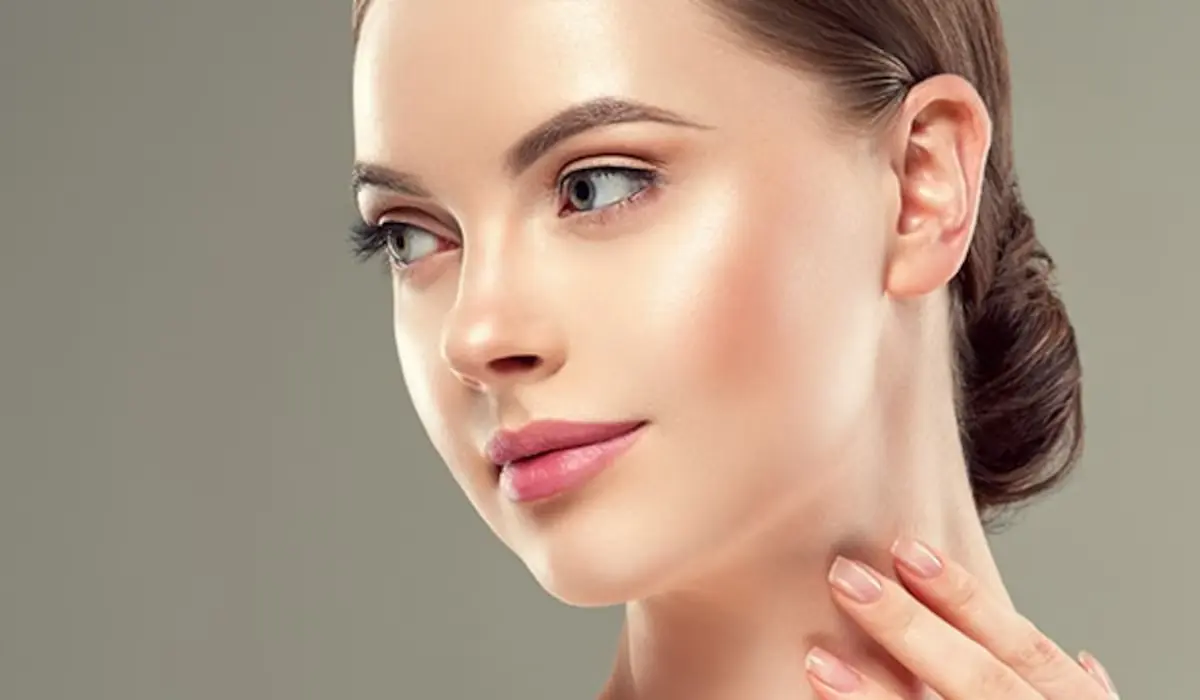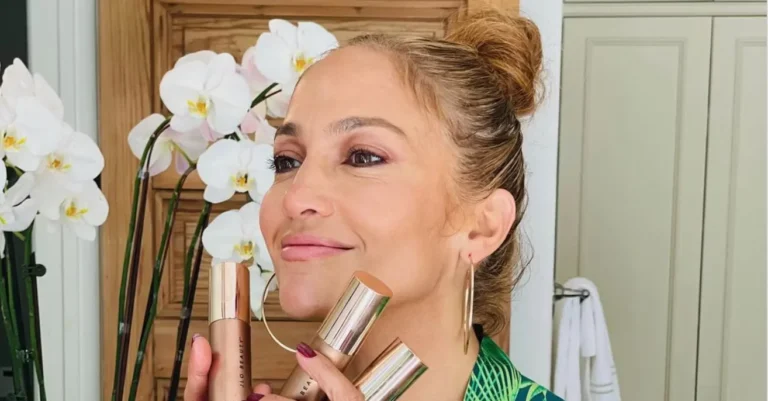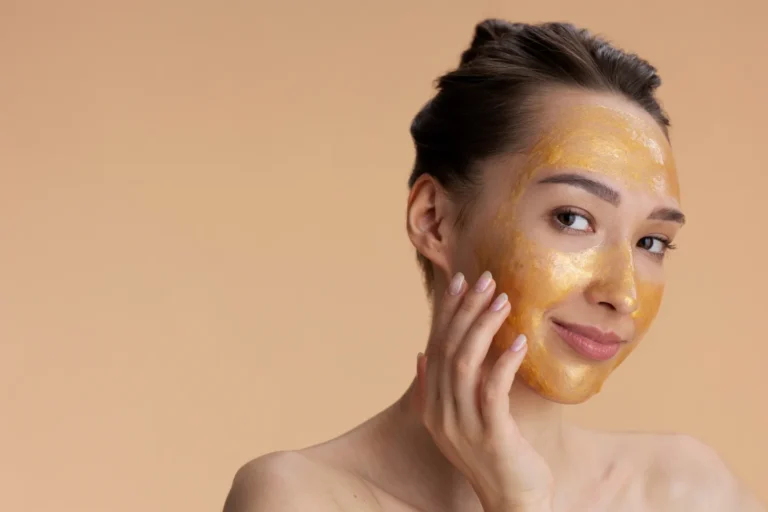Skin Care Secrets Revealed: Tips and Tricks for Healthy Skin
Skin care is more than just a routine; it’s a ritual that pampers your body’s largest organ – the skin. Achieving that flawless, glowing complexion isn’t just a dream, but an achievable reality. In this comprehensive guide, we will explore the world of skin care, and step-by-step routines, and unveil the best beauty tips for skin care to help you shine like a star.
What is Skin Care?
Skin care is not just about slathering a bunch of products on your face and hoping for the best. It’s a science, an art, and a commitment to taking care of your body’s largest organ – your skin. Skin care is the practice of maintaining the health and appearance of your skin. It involves a series of routines and steps to nourish, protect, and rejuvenate the skin.
The Skin’s Marvelous Functions
Before we delve into beauty tips, let’s understand the remarkable functions of our skin:
- Protection: Your skin shields your body from harmful external factors, such as UV radiation and pathogens.
- Regulation: It helps control body temperature and retains essential fluids.
- Sensation: The skin’s nerve endings provide the sense of touch, allowing us to feel and react to the environment.
- Excretion: Sweat glands in the skin eliminate waste products from your body.
- Absorption: The skin can absorb certain substances, making it a target for skincare products.
Skin Care Routine Steps:
Your journey to radiant, healthy skin begins with a well-structured skin care routine. In this step-by-step guide, we’ll walk you through the essential steps to help you achieve that enviable glow. So, let’s get started!
1. Cleansing – The Foundation of Skin Care
Cleansing is the first and most crucial step in any skin care routine. It involves removing dirt, excess oil, makeup, and impurities from your skin. Here’s how to do it right:
- Select the Right Cleanser: Choose a cleanser suitable for your skin type, whether it’s oily, dry, sensitive, or a combination.
- Wet Your Face: Use lukewarm water to wet your face. Hot water can strip your skin of essential oils.
- Apply Cleanser: Take a small amount of cleanser in your palm and gently massage it onto your face in a circular motion. Avoid harsh scrubbing.
- Rinse Thoroughly: Rinse your face with water until all the cleanser is removed. Pat your skin dry with a clean, soft towel.
2. Exfoliation – Bye-Bye Dead Skin Cells
Exfoliation is the process of removing dead skin cells from the surface of your skin. This step promotes a smoother, more radiant complexion. Here’s what you need to know:
- Choose Your Exfoliant: You can use either physical scrubs or chemical exfoliants. Physical scrubs contain small grains to physically scrub away dead skin, while chemical exfoliants use acids to dissolve dead skin cells.
- Frequency: Exfoliate 1-3 times a week, depending on your skin type and the product you’re using. Avoid over-exfoliation, as it can damage your skin.
3. Toning – Balancing Your Skin
Toning is the step that helps balance your skin’s pH and prepares it to absorb the benefits of serums and moisturizers. Follow these steps for effective toning:
- Select a Toner: Opt for a toner that suits your skin type. Toners can hydrate, soothe, or exfoliate, so choose accordingly.
- Application: Apply the toner to a cotton pad and gently sweep it across your face. Alternatively, you can pat it directly onto your skin with your palms.
4. Serums – Targeted Treatments
Serums are concentrated products designed to address specific skin concerns, such as fine lines, dark spots, or hydration. Here’s how to incorporate them into your routine:
- Select the Right Serum: Choose a serum that targets your specific skin concern, whether it’s anti-aging, brightening, or hydrating.
- Application: Apply a small amount of serum to your face and neck. Gently pat it on your skin, allowing it to absorb fully.
5. Moisturizing – Locking in Hydration
Moisturizing is crucial to maintaining your skin’s moisture barrier and preventing dryness. Follow these steps to keep your skin hydrated:
- Choose the Right Moisturizer: Select a moisturizer suitable for your skin type. Look for ingredients like hyaluronic acid or ceramides for added hydration.
- Application: Apply a small amount of moisturizer to your face and neck. Massage it using upward strokes.
6. Sun Protection – Shielding from Harmful Rays
Sunscreen is a non-negotiable step in your skin care routine. It protects your skin from the damaging effects of UV rays. Here’s what you need to do:
- Select a Broad-Spectrum Sunscreen: Choose a sunscreen with broad-spectrum protection and an SPF of at least 30.
- Application: Apply sunscreen generously to all exposed areas of your skin, including your face, neck, and any other body parts exposed to the sun.
- Reapplication: Reapply sunscreen every two hours, especially when outdoors.
7. Additional Steps (Optional)
While the above steps form the core of a basic skin care routine, you can customize your regimen with additional products, such as:
- Eye Cream: If you have specific concerns like dark circles or puffiness, use an eye cream.
- Spot Treatment: For acne-prone skin, use spot treatments with ingredients like salicylic acid.
- Face Masks: Incorporate face masks into your routine for additional hydration or targeted treatments.
- Retinol: Consider using retinol products for anti-aging benefits, but be sure to follow instructions carefully.
8. Nighttime Routine
Your skin care routine in the evening is just as crucial. Make sure to:
- Remove makeup and cleanse your face.
- Apply serums and treatments.
- Finish with a nourishing night cream or moisturizer.
9. Consistency Is Key
Consistency is essential in any skin care routine. Stick to your routine and be patient, as it may take time to see significant improvements. Remember, everyone’s skin is unique, so tailor your routine to your specific needs.
10. Seek Professional Advice
If you have specific skin concerns or conditions, consider consulting a dermatologist. They can provide personalized recommendations and treatments tailored to your skin.
Perfect Skin Care Timing Schedule
Embrace a comprehensive approach to skin care throughout the day. Your morning routine kickstarts your day with essential refreshments, while your evening routine provides a tranquil wind-down, setting the stage for nighttime rejuvenation. Daytime care focuses on protecting, and shielding your skin from environmental stressors. Together, these rituals offer a 24-hour cycle of care, ensuring your skin remains healthy, vibrant, and well-prepared for whatever life throws your way.
| Time of Day | Morning Skin Care | Night Skin Care | Day Skin Care | Evening Skin Care |
| Cleansing | – Gently cleanse your face to remove | – Start with a thorough cleansing to remove | – If necessary, use a gentle cleanser to | – Use a cleanser to remove makeup, sunscreen, |
| any impurities that may have accumulated | makeup, sunscreen, and impurities. | refresh your skin during the day. | and impurities from the day. | |
| Exfoliation | – Exfoliate (if desired) to remove dead | – Use an exfoliant (chemical or physical) to | – Skip exfoliation during the day to avoid | – Optionally exfoliate to promote cellular |
| skin cells and prepare your skin for the | removal dead skin cells and promote | sensitivity to UV rays. | turnover and a glowing complexion. | |
| day. | skin renewal. | |||
| Toning | – Apply a toner to balance the skin’s pH | – Use a toner to rebalance your skin after | – Apply toner to prep your skin for any | – Toning is optional in the evening, but if |
| and prepare it for subsequent products. | cleansing and exfoliating. | following products, like serums. | used, do it after cleansing. | |
| Serums | – Apply serums targeted for morning use, | – Use serums designed for nighttime use, | – Use serums appropriate for daytime, such | – Apply serums tailored to evening skin care |
| such as vitamin C or hyaluronic acid. | such as those containing retinol. | as antioxidants or hyaluronic acid. | needs, such as retinol or peptides. | |
| Moisturizer | – Use a lightweight, hydrating moisturizer | – Opt for a richer, more nourishing | – Apply a moisturizer with SPF for daytime | – Apply a nighttime moisturizer that |
| suitable for daytime wear. | nighttime moisturizer. | sun protection. | focuses on repair and hydration. | |
| Sunscreen | – Apply a broad-spectrum sunscreen with | – Skip sunscreen at night. | – Reapply sunscreen throughout the day as | – Sunscreen is not needed in the evening, |
| at least SPF 30 to protect your skin | needed, especially before outdoor activities. | but ensure you’ve cleansed properly. | ||
| Additional | – If desired, add eye cream and lip balm. | – Apply eye cream and lip balm. | – Reapply sunscreen every 2 hours when | – Use additional treatments or masks, if |
| – Don’t forget to hydrate your body and | – Consider any targeted treatments, such | as outdoors. | part of your evening routine. | |
| drink water to stay hydrated. | removal of dead skin cells and promote | – Stay hydrated and maintain a balanced diet. | – Enjoy a restful night’s sleep. |
This table provides a comprehensive overview of the morning, night, day, and evening skin care routines, with each routine tailored to the specific needs of your skin at different times of the day. Remember that individual skin care routines can vary based on your unique skin type and concerns.
Recommended Skin Care Product’s
| Product | Brand | Description |
| Cleanser | Cetaphil | Gentle cleanser suitable for all skin types. |
| Exfoliant (Chemical) | Paula’s Choice | Offers various exfoliants for different skin needs. |
| Exfoliant (Physical) | St. Ives | Apricot Scrub for deep exfoliation. |
| Toner | Thayers | Witch Hazel toner with aloe vera for soothing. |
| Serum (Anti-Aging) | SkinCeuticals | C E Ferulic serum for reducing fine lines. |
| Serum (Brightening) | Murad | Rapid Age Spot and Pigment Lightening Serum. |
| Serum (Hydrating) | Neutrogena | Hydro Boost Hydrating Serum with hyaluronic acid. |
| Moisturizer | Olay | Regenerist Micro-Sculpting Cream for hydration. |
| Sunscreen | Neutrogena | Ultra Sheer Dry-Touch Sunscreen SPF 30 or 50. |
| Eye Cream | La Roche-Posay | Hydraphase Intense Hyaluronic Acid Eye Cream. |
| Spot Treatment | Mario Badescu | Drying Lotion for targeted acne treatment. |
| Face Mask | Origins | Original Skin Retexturizing Mask with Rose Clay. |
| Retinol | RoC | Retinol Correxion Deep Wrinkle Night Cream. |
These products come from reputable brands and offer a range of options to address various skin concerns and types. Please note that individual results may vary, so it’s essential to select products that suit your specific skin needs.
Traditional Skin Care vs. Modern Skin Care
Skin care has come a long way, evolving from traditional methods passed down through generations to modern, science-backed routines. In this listicle, we’ll explore the key differences between traditional and modern skin care practices.
Traditional Skin Care:
- Natural Ingredients
- Traditional skin care relies on natural ingredients like herbs, oils, and plant extracts for remedies and treatments.
- Ingredients often include aloe vera, turmeric, honey, and yogurt.
- Simplicity
- Traditional methods tend to be simple, with fewer products and steps involved.
- Cleansing and moisturizing with natural ingredients are at the core of traditional routines.
- DIY Remedies
- Many traditional skin care practices involve DIY remedies that can be made at home.
- For example, using gram flour and rose water for exfoliation and brightening.
- Holistic Approach
- Traditional skin care often takes a holistic approach, considering diet, lifestyle, and natural remedies for skin health.
- Herbal teas and dietary changes are often recommended.
- Ancestral Wisdom
- Knowledge is passed down through generations, preserving ancestral wisdom about skin care practices.
- Grandmothers and elders play a significant role in passing on these traditions.
Modern Skin Care:
- Scientific Formulations
- Modern skin care is based on scientific research, resulting in advanced formulations.
- Active ingredients like hyaluronic acid, retinol, and peptides are commonly used.
- Specialization
- Modern routines often involve multiple specialized products, each targeting specific skin concerns.
- Serums, toners, and essences are part of a modern routine.
- Technology
- Technology plays a key role in modern skin care, with tools like facial brushes, LED devices, and advanced skincare apps.
- Innovations such as microneedling and laser treatments are available.
- Customization
- Modern skin care encourages customization, allowing individuals to tailor their routines to their unique needs.
- Products are designed for different skin types, concerns, and age groups.
- Accessibility
- Modern skin care products are widely accessible through online shopping, making it easy to explore and purchase.
- International brands and products are readily available to consumers.
Conclusion: Embrace the Beauty of Skin Care
The journey to radiant skin is an exciting one, filled with nurturing routines and effective products. By following a well-structured skin care routine and implementing these beauty tips, you can unveil the secrets to glowing, healthy skin. Start your journey today and let your beauty shine!
Remember, consistency is key. Stick to your routine, protect your skin, and embrace the beauty of skin care.
So, what’s your favorite beauty tip for skin care? Share your thoughts and experiences in the comments below!
FAQs
Q1: What’s the best product for sensitive skin?
If you have sensitive skin, opt for gentle, fragrance-free products like Cetaphil Gentle Skin Cleanser. It’s a top choice for many with sensitive skin.
Q2: How often should I exfoliate my skin?
Exfoliation frequency varies by skin type. Typically, 1-3 times a week is sufficient for most people. Adjust based on your skin’s response.
Q3: Can I skip sunscreen on cloudy days?
No, UV rays penetrate clouds. You should wear sunscreen every day to protect your skin from potential damage.
Q4: Do I need a separate night cream?
Night creams are formulated to provide extra hydration and repair while you sleep. They can be beneficial, but a good moisturizer can also suffice.
Q5: Is it necessary to use all the steps in a skincare routine?
A basic routine includes cleansing, moisturizing, and sun protection. Additional steps like serums can be tailored to your specific needs.







